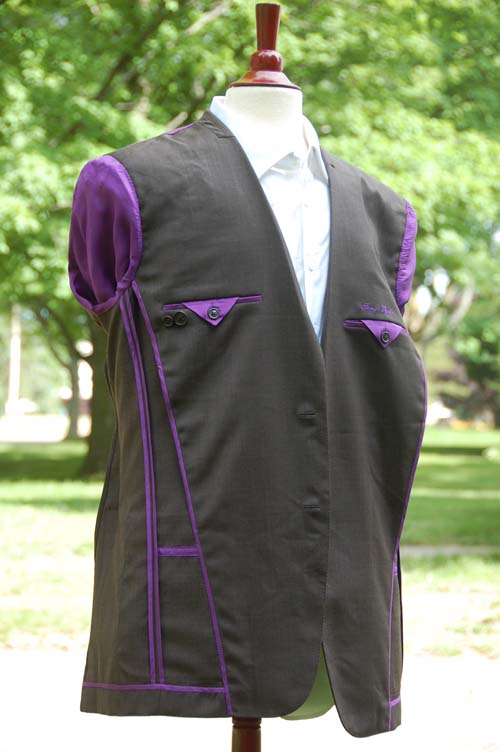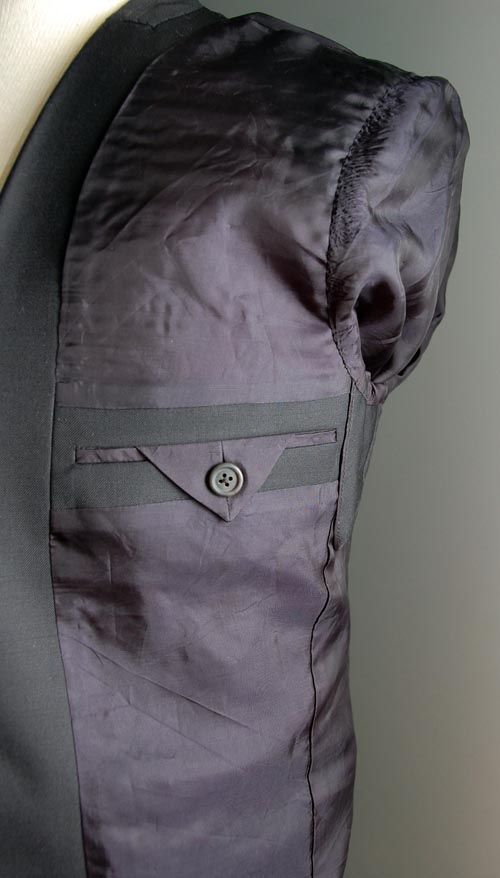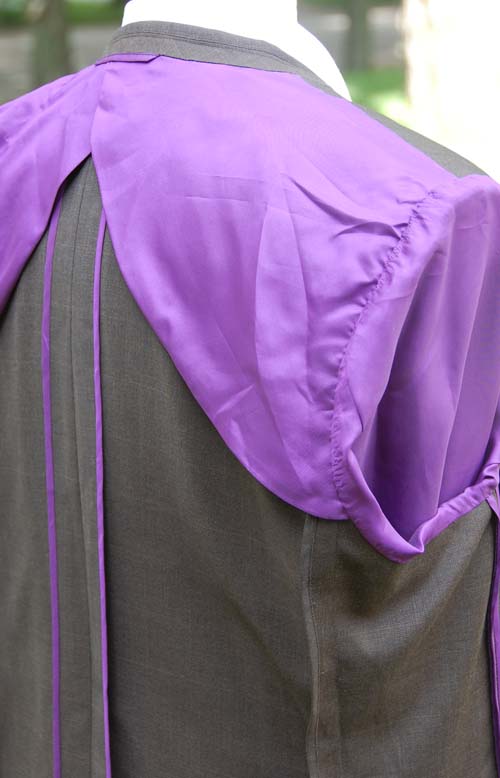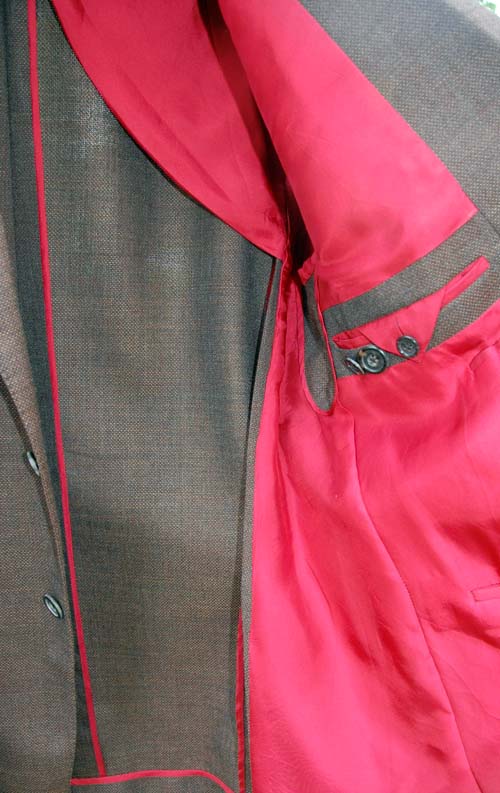You see – most men don’t even realize they have an option.
But you do – especially when buying custom or at a higher end menswear store.
This leads to the question – which type of jacket is better -Lined or Unlined?
Because both unlined and lined jackets have their benefits – the answer isn’t clear cut.
In fact – the question above is in my opinion the wrong one to ask. Instead the question should be:
Which jacket style – lined or unlined – is best for your individual needs?
In this article I’ll be discussing the pros and cons of jacket linings – because a man should always know what his options are.
Jacket linings come in a wide variety of materials and styles, ranging from a full lining of brightly-colored silk to a completely unlined jacket.
First, a few menswear definitions:
 The “lining” of the jacket should not be confused with the “canvas.”
The “lining” of the jacket should not be confused with the “canvas.”The canvas is a layer of material attached to the inside of a jacket to give it shape, while the lining is a thinner layer of cloth that lies between the wearer’s body and the canvas and jacket interior.
Some jackets are unlined. In this case, the inside will be finished in the same material as the outside.
Since a lining hides some seams, an unlined jacket typically requires more professional finishing, which increases the cost.
Half-lined jackets usually have lining across the upper half of the back and down the sides of the jacket, but not on the lower part of the back.
Quarter-lined or butterfly jackets are similar to a half-lining, but with the lining removed from the sides of the jacket. Only a small panel across the back and the sleeves are lined.
Skeleton lining means what it sounds like — as little lining as possible, usually only a small covering in the upper back to protect the suit canvas.
Advantages of a Jacket Lining
 A lined jacket has more weight to it. The extra layer of cloth helps tug the garment firmly down on your shoulders, making it fall smoothly from top to bottom.
A lined jacket has more weight to it. The extra layer of cloth helps tug the garment firmly down on your shoulders, making it fall smoothly from top to bottom.Lining also provides protection for the inside of the jacket. Not only does it help absorb any sweat you might generate (reducing the need for frequent dry cleaning), it also provides another layer of cloth to stretch when your body moves. This reduces the amount of tugging on the actual suit material, extending its lifespan.
Certain pocket styles are sewn into the lining, particularly interior breast pockets (sometimes called “eyeglass pockets”). Unlined jackets lack these pockets, and usually need the somewhat informal patch-style pockets on the outside.
Lined jackets are usually less expensive than unlined because they require less interior finishing. Linings can also be replaced reasonably easily if they wear out, whereas a worn jacket interior means it’s time for a new jacket.
Advantages of an Unlined Jacket
 Despite the advantages of a lining, many men swear by unlined or skeleton linings.
Despite the advantages of a lining, many men swear by unlined or skeleton linings.A primary reason for buying an unlined jacket is summer or hot-weather wear: unlined jackets are simply lighter and more breathable.
Quarter-lining can be a good compromise for men who want a bit of added durability and the option of interior pockets.
Loose-weave fabrics like seersucker, hopsack, and many linens are more difficult to fit a lining for.
The lining needs to be able to tighten and go slack whenever the jacket does, and a typical lining won’t have the same amount of tension in it as these looser weaves.
Getting it fitted right is a challenge even for a skilled tailor. An improperly-fitted lining will make the jacket bunch and wrinkle, ruining its drape.
Unlined jackets have a softer and more natural shape that many men prefer for their casual styles.
Typical Lining Fabrics
Most jackets are lined with acetate fabrics. Bemberg is probably the most well-known material, and one of the most dependable. An alternative synthetic is the Ermazine brand, made from viscose.
Silk is sometimes used to make suit linings, particularly brightly-colored and decorative ones, but it is much hotter than synthetics and bunches easily. Most tailors will only make silk-lined jackets on request, and may try to discourage customers from them.
Cotton linings are cheap but uncomfortable, and should be avoided.
 Conclusion: When to Line and When Not to Line
Conclusion: When to Line and When Not to LineLinings add weight and durability to a jacket. However, they also stiffen the drape and hold in more heat.
Suits/jackets that should be lined:
· Business suits in light, delicate wools
· “Three-season” or winter suits
· Cotton sports jackets (they usually benefit from the added stiffness)
· Very frequently-worn jackets
Suits/jackets that should be unlined:
· Lightweight summer jackets
· Loose-weave fabrics like seersucker
· Casual jackets with a deliberately soft shape (stiffens them up too much)
Of course, you can often find a middle ground with partial linings, such as a skeleton lining to protect the canvas of a linen summer suit without adding too much extra weight to it.
related post:
http://bespokesuits123.blogspot.com/2013/05/how-to- effectively-buy-clothing-online.html
http://www.matthewaperry.com/

After reading some nice stuff in your article I really feel speechless, because it is quit pretty article On Linen Suits. Beside this it is also a long lasting article. Thanks for giving me such type of useful information..
ReplyDelete